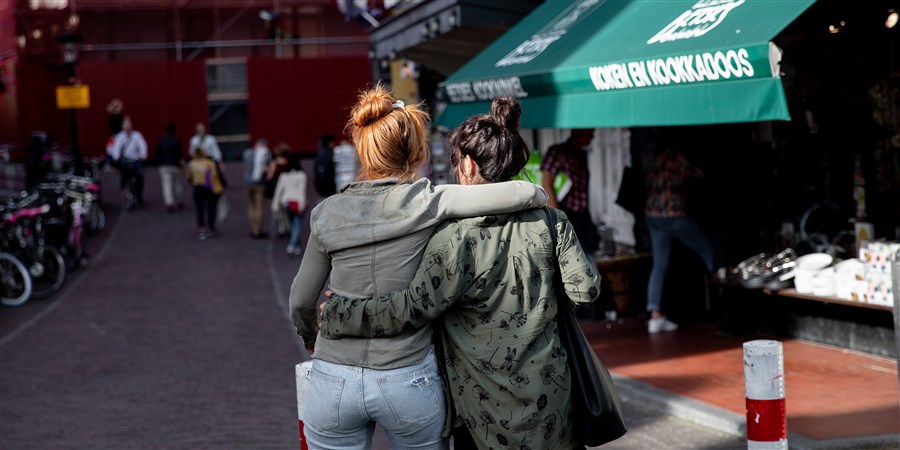1 in 10 LGBTQIA people are victims of violence

| LGBTQIA people (% of people aged 15 yrs and over) | Non-LHBTQIA individuals (% of people aged 15 yrs and over) | |
|---|---|---|
| Total of traditional crime | 24.9 | 19.2 |
| Total of violent crimes | 9.6 | 6.1 |
| Assault | 1.6 | 1.1 |
| Physical assault | 6.2 | 4.5 |
| Sexual offences | 4 | 1.6 |
| Total of offences against property | 13.2 | 10.3 |
| Vandalism | 7.6 | 6.3 |
People with non-binary identities more likely to be victims
Of all LGBTQIA people, those with non-binary/genderqueer identities were the most likely to be victims of traditional crime; 24 percent of them were victims of one or more violent crimes in 2023. Bi-plus women (women attracted to more than one gender) and gay men were also relatively likely to be victims of violence, at 13 and 10 percent, respectively.
| Victims of violence (% of people aged 15 yrs and over) | |
|---|---|
| Sexual orientation | |
| Homosexual men | 10 |
| Homosexual women | 8.7 |
| Bi-plus men | 8.4 |
| Bi-plus women | 12.7 |
| Heterosexual men | 6.1 |
| Heterosexual women | 6.1 |
| Asexual men | 6 |
| Asexual women | 4.7 |
| Do not know yet | 5.1 |
| Gender identity | |
| Transgender men | 5.9 |
| Transgender women | 9.2 |
| Non-binary/gender queer | 23.5 |
| Cisgender men | 6.3 |
| Cisgender women | 6.5 |
| Intersex | |
| Intersex person | 7.5 |
| Non-intersex person (endosex) | 6.5 |
Impact of victimisation higher among LGBTQIA people
The number of people who became victims of traditional crime was higher among LGBTQIA people than among non-LGBTQIA individuals. A total of 32 percent of LGBTQIA victims experienced emotional, financial or physical consequences, compared to 25 percent of non-LGBTQIA victims. The largest difference was seen in the emotional impact: 26 percent of LGBTQIA victims report suffering an emotional impact, compared to 20 percent of non-LGBTQIA victims.Perceived safety is lower among LGBTQIA people
Among LGBTQIA people aged 15 years or older, 42 percent said they had sometimes felt unsafe, and 18 percent occasionally experienced this in their own neighbourhood. These percentages were also higher than among the rest of the population, at 34 and 14 percent, respectively. LGBTQIA people were also more likely to be afraid of becoming a victim of crime and rate their likelihood of being assaulted, for example, as higher than non-LHBTQIA individuals.
| LGBTQIA people (% of people aged 15 yrs and over) | Non-LGBTQIA individuals (% of people aged 15 yrs and over) | |
|---|---|---|
| In general | ||
| Feeling unsafe sometimes | 42.3 | 34.1 |
| Feeling unsafe often | 3.1 | 1.7 |
| In their own neighbourhood | ||
| Feeling unsafe occasionally | 18.2 | 13.7 |
| Feeling unsafe often | 2.8 | 1.8 |
| Afraid of becoming a victim of crime | ||
| Sometimes | 13 | 11.7 |
| Often | 2.7 | 1.8 |
Related items
- News release - The Netherlands has 2.7 million LGBTQIA people